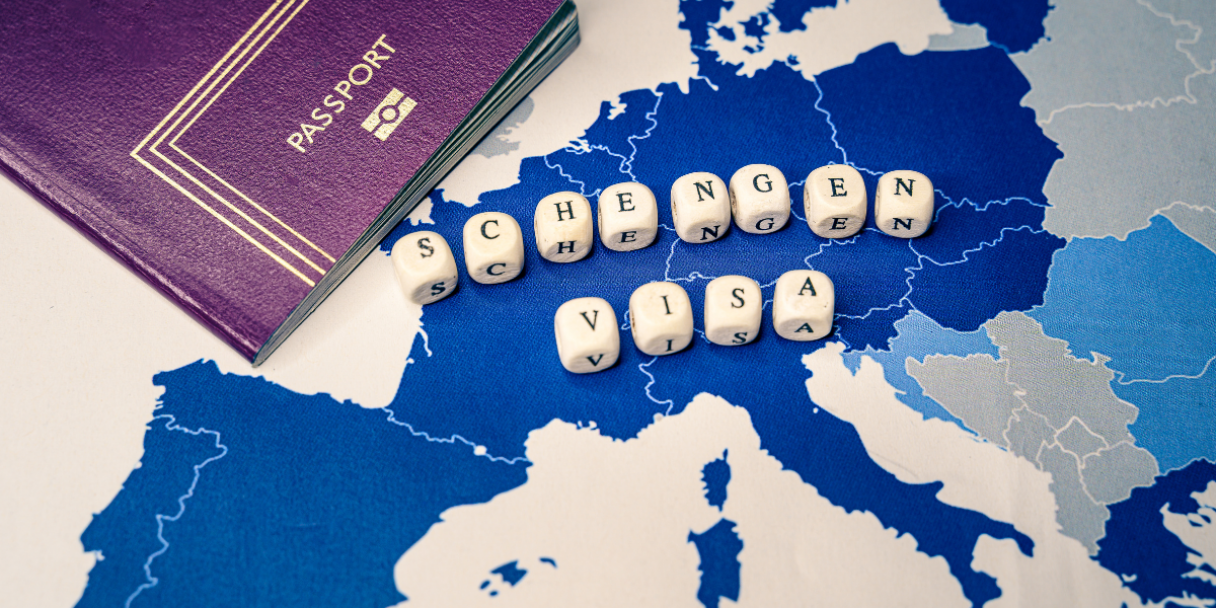Immigration updates for the Schengen Area
What you need to know about travelling between Schengen countries.

With 28 years of experience in international expansion and global mobility, Mauve Group helps businesses to hire abroad. Our Global Visa & Immigration team supports companies of all sizes.
Mauve's team of experts navigate complex immigration routes and keep up-to-date with all the latest developments in international visa and immigration. So, we always ensure complete compliance for all our clients and workers.
Mauve’s Visa & Immigration team has in-depth knowledge of the rules and regulations pertaining to specific regions. The Schengen Area is one region in which recent updates to visa and immigration laws are being applied.
What is the Schengen Area?
The Schengen Area was created in 1985 by five countries in the European Union (EU). These countries were France, Germany, Belgium, the Netherlands, and Luxembourg.
They named it after the Luxembourgian village of Schengen, where officials signed the agreement. Officials also signed the Schengen Convention there in 1990.
Since 1985, the Schengen Area has added more countries. It now comprises 25 of the 27 EU member states, and all members of the European Free Trade Association (EFTA).
The Schengen Area covers 4 million square kilometres. It is the world’s largest free travel area. This means that authorities do not carry out checks at internal borders.
Countries included in the Schengen Area follow a series of regulations knowns as the Schengen Borders Code (SBC).
Latest updates to immigration rules within the Schengen Area
The EU’s digital Entry-Exist System (EES) was set to begin operating in November 2024. EES is an automatic IT system which tracks travellers’ biometric data. However, it has already been pushed back several times and recent reports suggest it will be delayed even further.
These reports imply that France, Germany, and the Netherlands are concerned that they won’t be ready to implement the scheme. Countries have raised questions about the practical testing of the system and whether the November launch date is achievable.
How will EES work?
EES will replace passport stamps for those travelling across borders within the EU. Upon crossing, travellers will provide their biometric data. Government agencies will store this for three years. During the following three years, travellers will only need to scan their passport at a self-service kiosk.
The European Travel Information and Authorisation System (ETIAS) will complement this system. ETIAS is expected to be launched in 2025. It will function as an equivalent to the USA’s ESTA visa waiver scheme. It will be available to people from the 61 countries non-EU countries that have access to the Schengen free travel area.
ETIAS aims to allow European countries to control their borders and mitigate risks posed by migration, terrorism, and disease. This system, along with EES, aims to improve and speed up information sharing. These systems also aim to reduce the time travellers spend at the border.
Potential issues upon implementation
Non-compliance
The new system will allow those availing of it to stay in-country for a maximum of 90 days per 180-day period. Travellers must not overstay this timeframe. Those on work permits must also be sure not to violate the terms of their permits by overstaying.
If a traveller overstays in the Schengen Area, the consequences vary depending on the country where they are caught. For example, Greece imposes heavy fines on those caught overstaying. Germany operates the most rigorous immigration laws in the EU, in this regard.
Overstaying can result in penalties and cause difficulties with future travel. Employers need to ensure that their workers are completely compliant when travelling and working abroad. Businesses can face severe repercussions, if found to be non-compliant.
Somewhat worryingly, new research shows that more than half of UK citizens aged above 45 are unaware of the EES at all. This means that they will be unprepared for the new system if they travel when it is implemented. Lack of preparation or knowledge of immigration protocols can increase the risk of accidental non-compliance.
Delays
It is recommended to avoid traveling in the Schengen Area for the first few weeks after this new system begins operating.
Expect delays as authorities address teething problems. Experts predict that a large number of travellers will be surprised by the new system, causing hold-ups.
Business travel upset
If travelling on an international assignment during this time, workers may experience delays or even miss the engagements for which they travelled in the first place.
Flexible working disruption
Those wishing to ‘work from anywhere’ may face issues when doing so, once the EES/ETIAS system is in place.
Despite being required to secure a work permit in most EEA countries, this has proved difficult for authorities to enforce. At present, many digital nomads simply travel from place to place, working from their computers. They remain in place short-term, and then move on once once their time is up. However, many workers overstay their permit allowances.
Now, it will be easier to trace if workers are overstaying their limits when moving around the Schengen Area. If found to be working for a company without a work permit, the company may face serious penalties.
To learn more about how your employees' hush trips could impact your business, read our article on the subject.
How Mauve Group can help
If you are an employer with entities in the Schengen Area or workers travelling within this region, consulting a global employment solutions provider can help you to navigate any and all travel and immigration updates.
As an employer, it is very important for both your business and workers to stay ahead of travel updates in the regions you’re working in. Managing global talent means you need to be aware of global updates and trends.
Working with a global business expansion expert, like Mauve Group, can help you to remain compliant. We can guide you on digital nomad visas, global immigration, and tax laws. We can also support your business with talent management for your global workforce, in a cost-effective and compliant way.
To learn more about how we can help, get in touch with our team of experts today.

HR and Employer of Record (EOR): supporting employees globally
Discover how HR and Employer of Record (EOR) services support employees globally – ensuring compliance, consistency, and a positive experience across international teams.


Global payroll software and data visibility: one system, many countries
Discover how global payroll software provides real-time data visibility, improves accuracy and compliance, and enables seamless payroll management across multiple countries in one system.
